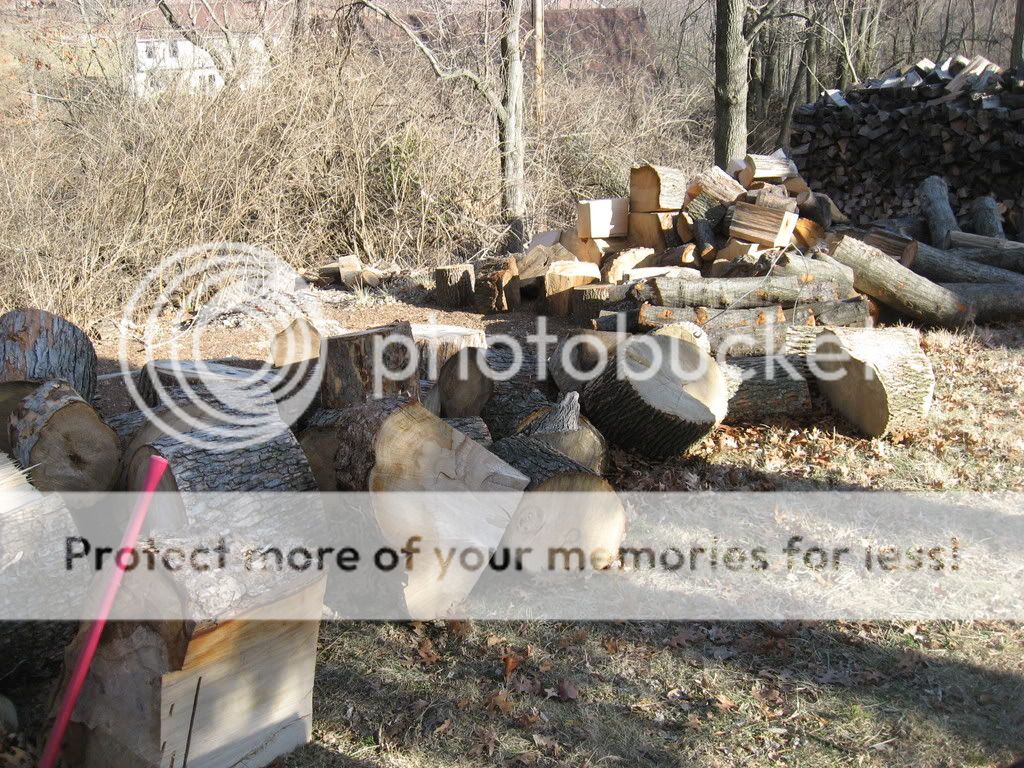You are using an out of date browser. It may not display this or other websites correctly.
You should upgrade or use an alternative browser.
You should upgrade or use an alternative browser.
Is this Black Locust?
- Thread starter iowa
- Start date

Help Support Arborist Forum:
This site may earn a commission from merchant affiliate
links, including eBay, Amazon, and others.
dustytools
Addicted to ArboristSite
Another vote for Elm.
Elm
polexie
ArboristSite Operative
Elm, grain and bark looks exactly the same overhere in Europe.
Lex
Lex
bigtreeguy
ArboristSite Lurker
I believe you have an American Elm there. We remove quite a few around here due to death from DED. Splitting is tough especially the wood close to a crotch, but it makes pretty good firewood. Many municipalities have restrictions on storing the wood with bark attached due to the spread of DED. The brood wood will harbor the disease and pose a threat to healthy trees.
Constrictor
ArboristSite Operative
Lignum, we split 20-25 rounds at the site and while it was hard to split was nothing like your stringy splits. Im really thinking Thornless honey Locust because of the 2" deep seed pods right under the tree. The pods look exactly like HL.
Lignum
Addicted to ArboristSite
Lignum, we split 20-25 rounds at the site and while it was hard to split was nothing like your stringy splits. Im really thinking Thornless honey Locust because of the 2" deep seed pods right under the tree. The pods look exactly like HL.
It's an Elm. Those pods blew in from a neighboring tree. Honey Locust has a very unique bark, and Black Locust has yellow wood when fresh cut.
iowa
Addicted to ArboristSite
I don't know. Kinda hard to believe that directly below this trees canopy was all big black seed pods. The tree next to it was very young and could not possibly produce this amount of seeds! And then to drop them directly below this tree. Hard to believe.
I talked to several guys at my work that said it's a locust. They've run into them before. Some split great. Some a bit more stringy. They also said some locust have no thorns at all. Maybe a certain sex. Is there a male and female tree? Nurseries even sell thornless locust trees.
I talked to several guys at my work that said it's a locust. They've run into them before. Some split great. Some a bit more stringy. They also said some locust have no thorns at all. Maybe a certain sex. Is there a male and female tree? Nurseries even sell thornless locust trees.
iowa
Addicted to ArboristSite
Ok. Here's some more pictures! I almost killed myself going out to get this. We are in the middle of an ice storm!!! There was a layer of wet ice on these.. It's sleeting out now!




ELM!!! I don't know the specific variation though. Good luck with it. Some times it doesn't split too hard. I split a 24" Elm tree once and it was cake.
boostnut
ArboristSite Guru
mystery = elm.
Lignum
Addicted to ArboristSite
Ok. Here's some more pictures! I almost killed myself going out to get this. We are in the middle of an ice storm!!! There was a layer of wet ice on these.. It's sleeting out now!


The top pic is not Black Locust. This is:

The bottom pic is Elm. Look at the pieces closest to the left side. Elm baby. Ignore the one piece of Sycamore, and Silver Maple, the rest is Elm.

outdoorlivin247
Addicted to ArboristSite
The dark center is typical w/ HICKORY....I still say it is Pignut or Bitternut HICKORY...Try to burn it or stick a moisture meter in it...Elm is way up high on the green list, hickory is on the low...Sorry, that is just my 2 cents...Or a dollar or where ever I am at now in this thread...
iowa
Addicted to ArboristSite
Sorry that top pic that I have labeled is black locust. Very young. The new growth had thorns on it. Not large thorns like honey locust though. Only 1" or so...
iowa
Addicted to ArboristSite
The mystery pics sure look a lot like eastern hop hornbeam. Also know as ironwood. It rivals hedge for fuel wood.
You maybe correct. The leaves resemble the leaves on the ground too.
The final question is this? How does hornbeam split? From this answer, I think the final outcome will be Elm or Hornbeam...
outdoorlivin247
Addicted to ArboristSite
Hophorn beam or Ironwood has thorns...The bark is almost scale like...
Peacock
Addicted to ArboristSite
Hophorn beam or Ironwood has thorns...The bark is almost scale like...
Not on what I've got/cut in the past.
It splits easier than elm. More like hickory.
My vote goes for Ky coffee bean tree.What is inside of the pods the seeds on a coffee bean tree are about the size of a small marble.And the twigs at the ends are thich and blunt.:greenchainsaw:
Similar threads
- Replies
- 1
- Views
- 275
- Replies
- 21
- Views
- 1K
- Replies
- 3
- Views
- 1K
- Replies
- 5
- Views
- 655
- Replies
- 102
- Views
- 4K



